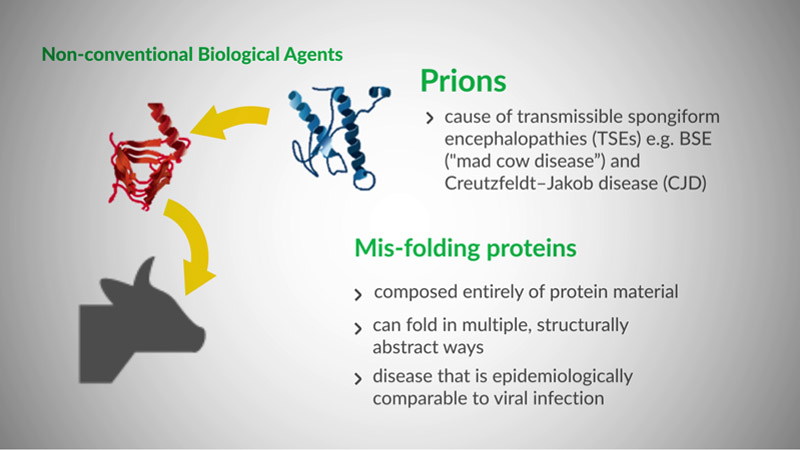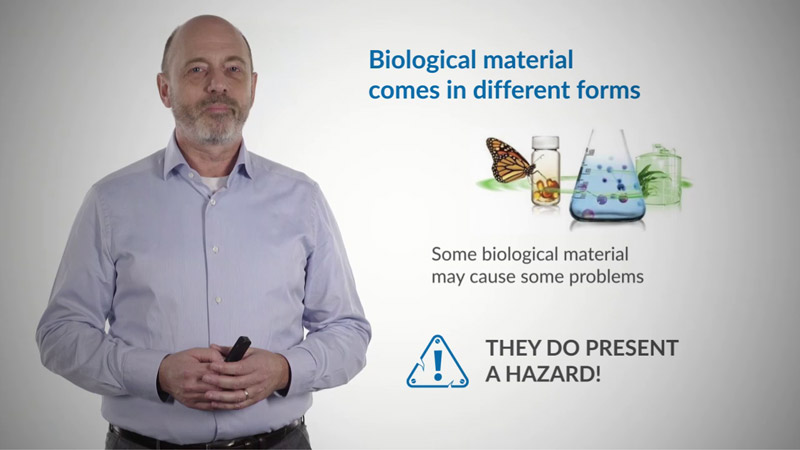About this module
In order to be able to identify risks associated with activities involving biological material, it is essential to understand the capacity of such materials to cause damage and/or deleterious effects. This capacity is referred to as the “biohazard” and is the main determining factor in the subsequent risk assessment and management.
In order to manage identified risks, integrated biosafety and biosecurity programmes need to be implemented, as risks are not only associated with what happens within facilities; but are also influenced by outside factors. While biosafety management is covered in detail in other modules, this module will already develop the essential elements of biosecurity.
In order to understand what is at stake, this module is composed of theoretical and practical contents regarding biological security or “Biosecurity”. It reviews the different components of biohazard - What makes certain biological material hazardous? How can we judge the potential deleterious effects that it may cause?
We explore the huge diversity of biological agents, such as pathogens and parasites; materials, such as blood samples and tissue cultures; as well as genetically modified organisms. Once we have identified potential hazardous features, we learn how activities with such material may lead to risks.
Major focus of the Module and main goals
Understanding which biohazards are associated with specific biological material is the starting point for any biorisk management programme. In this module you will discover some of the criteria that are used to categorise and rank biological material in relation to their possible negative impact. Complementary to biosafety management, this module will explore the risk assessment and management practices specific for biosecurity.
The purpose of this Biosafety & Biosecurity module is to:
- Provide an introduction to features and approaches similar to both biosafety and biosecurity;
- Provide a fundamental understanding of biosecurity and why it is important;
- Help identify risks depending on the commodities and activities of a facility to help allocate resources for securing them;
- Provide an overview of the components of a biosecurity programme;
- Provide an overview of the dual-use risks associated with modern microbiology


Upon completing this Module, you will:
- Be able to identify biological hazards and judge how important they are;
- Understand the complementarity between biosafety and biosecurity in biorisk management;
- Have an insight on biosecurity requirements that certain commodities demand in today’s society;
- Be aware of risks and sources of risks related to biosecurity;
- Be provided with the fundamental tools for assessing such risk;
- Be aware of biosecurity measures, and where to apply them, based on identified risks;
- Know how to integrate biosecurity into biosafety and recognise potential conflicts.